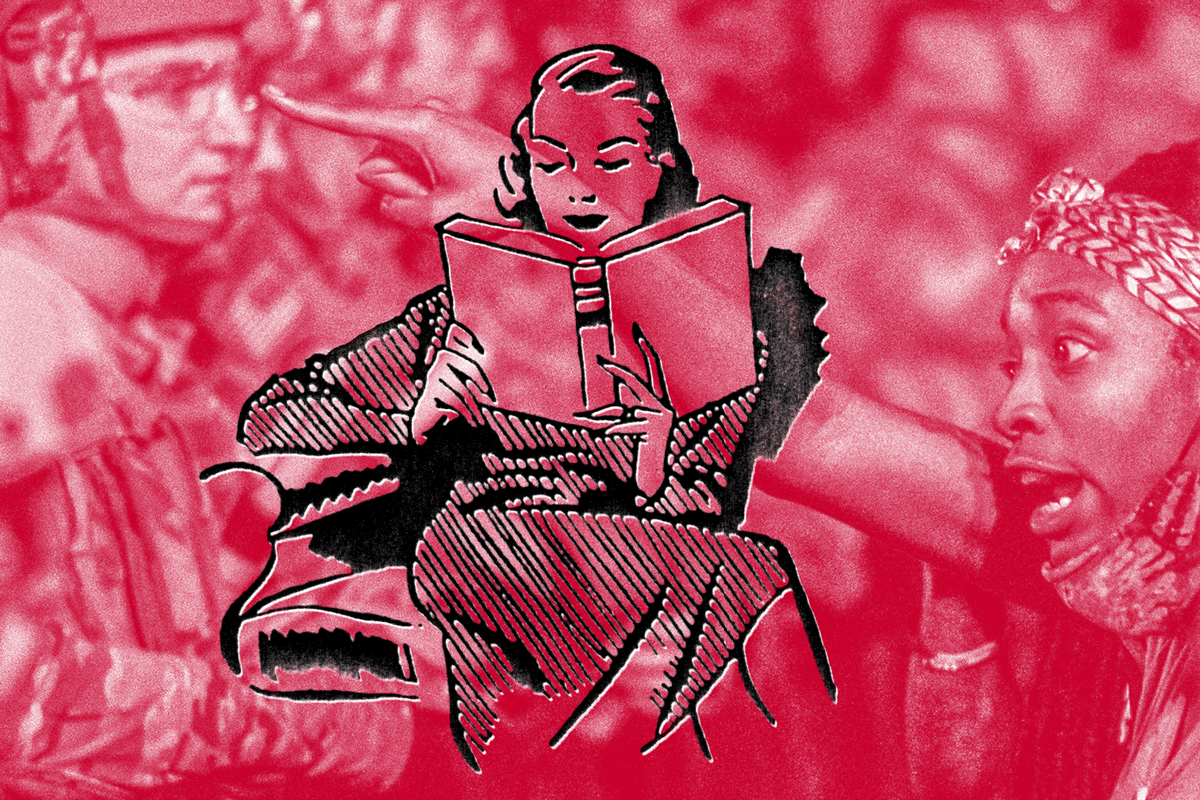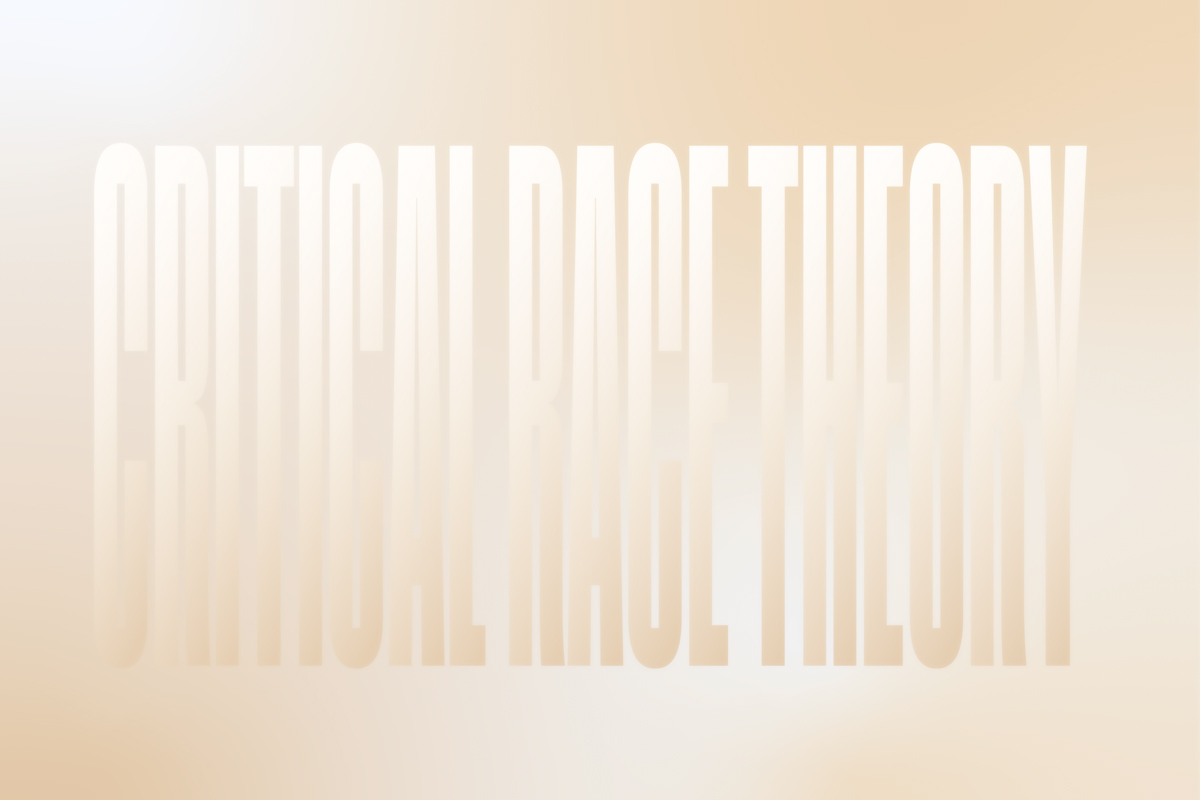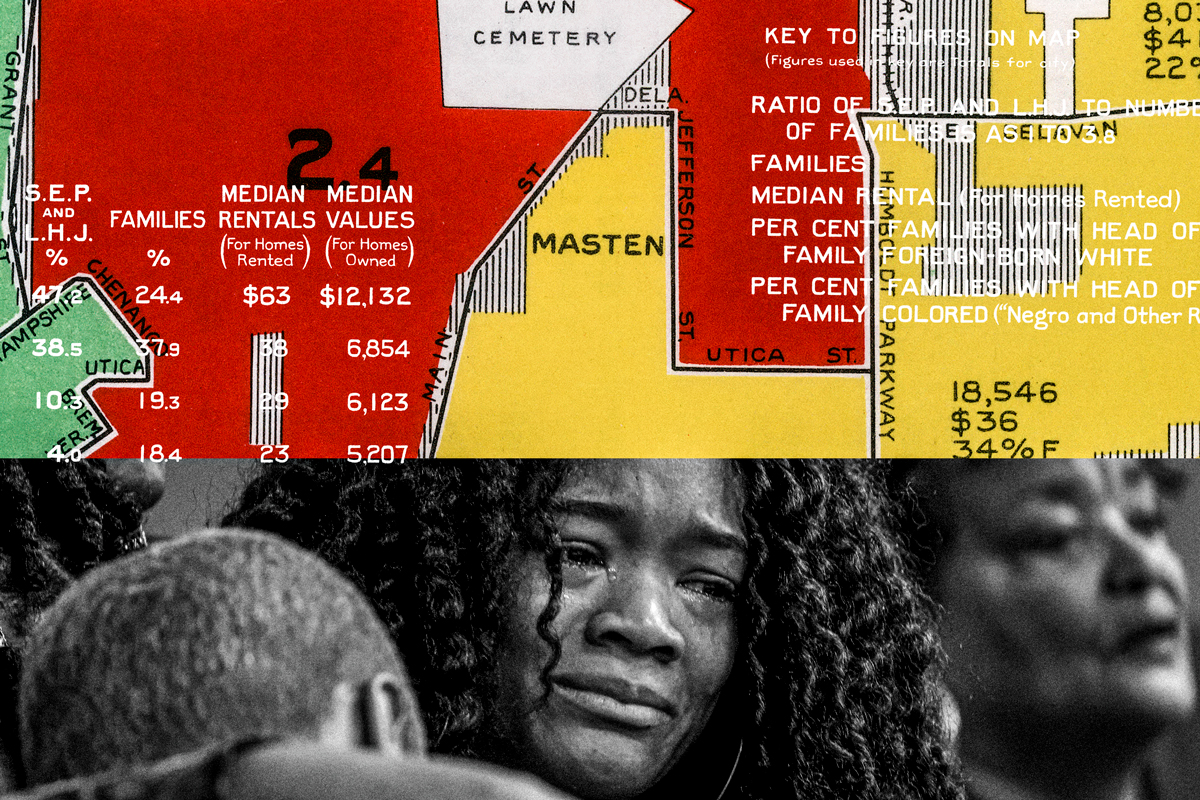Ten days after George Floyd was murdered by Derek Chauvin, Chairman Hakeem Jeffries and Vice Chair Katherine Clark convened a meeting of the House Democratic Caucus designated as a “dialogue about race in America.” One of the speakers was Robin DiAngelo, best-selling author of White Fragility: Why It’s So Hard for White People to Talk About Racism. After George Floyd’s death, sales of race-related books increased by as much as 6,800 percent, and DiAngelo was in high demand. “For all the white people listening right now, thinking I am not talking to you,” DiAngelo said to the caucus, “I am looking directly in your eyes and saying, ‘It is you.’”
“It is me” is a mantra among white DiAngeloites. The impulse behind this refrain comes in good faith, but it reflects a larger problem: the need among white people to center themselves in public discussions of race. This reflex has gained additional traction from the broad consensus in centers of white discourse that self-help is a corrective for structural racism.
It’s worth recalling that these notions were never among the principal aims of civil rights reformers as they tackled the institutions, laws, and social practices that shored up American apartheid. In a talk before a gay student group at the University of Pennsylvania in 1986, civil rights leader Bayard Rustin said, “our job is not to get those people who dislike us to love us. Nor was our aim in the civil rights movement to get prejudiced white people to love us. Our aim was to try to create the kind of America, legislatively, morally, and psychologically, such that even though some whites continued to hate us, they could not openly manifest that hate.”
Rustin’s vision of structural change tends to get crowded out amid the confessional rigors of white self-examination. In the recursive confines of self-help culture, much of the post-Floyd reckoning among guilt-prone white Americans tended to train the bulk of attention on white people problems, via unsolicited confessions of white privilege, acknowledgments of white fragility—and even baroque self-critical discussions of how, say, punctuality and the enforcement of workplace deadlines are telltale signs of a white rage for order.
For a large swathe of white liberals, it seems, this is how an antiracist politics takes shape: through the ministrations of self-styled white identity gurus such as DiAngelo, Tema Okun, and Peggy McIntosh, who work in the traditionally female-identified sphere of service-minded corporate management. And this trend marks a reversion to a very well-worn mode of white liberal discourse: the tactical reformulation and repackaging of Black Americans’ experience of racism in a brand of cultural aesthetics earmarked for white consumption.
This whitening of antiracist thought and practice also serves the bad-faith agendas of the defenders of unalloyed white privilege on the right. The right-wing crusade against critical race theory and honest racial instruction in our schools has always sought to identify CRT with all brands of antiracist doctrine, including DiAngelo’s decidedly white-centric version. This deliberate and fraudulent mis-definition of critical race theory serves to elide the true source of Republican discontent: the work of influential white women in the economy of antiracist, diversity, equity inclusion training.
In a country that treats corporate entities like people before the law, it’s no great surprise to see that corporations have rallied to furnish a full suite of diversity, equity, and inclusion workshops for their traditionally white-administered workplaces. In many corporate settings, Diversity, Equity, and Inclusion training functions as watered-down HR instruction, doubling as racial reckonings—a body of workplace initiatives driven largely by the need of corporate entitites to shield themselves from liability under anti-discrimination law. This is perhaps a key reason that, for all the corporate lip service mobilized behind DEI training sessions, evidence of their effectiveness is scant.
But for right-wing ideologues, effectiveness is never the point; agitprop campaigns feed on cherry-picked anecdotes designed to reinforce scaremongering campaigns that place innocent white kids in putative cultural and racial peril. So some of the key texts targeted in today’s anti-CRT culture war bear little resemblance to critical race theory as it actually exists: DiAngelo’s White Fragility, Peggy McIntosh’s White Privilege, and Tema Okum’s White Supremacy Culture among them. DiAngelo’s work, while it borrows from critical race theory (critical race theorists are cited two times out of the 101 notes) is engaged in a different project. Critical race theory is not rooted in the emotional well-being of white people. Critical race theory is a prism devoted to analyzing anti-Black societal structures, following the same broad agenda that Rustin outlined—with no particular regard for the feelings of white people. In White Fragility, by contrast, DiAngelo lays out an action plan heavy on individual reflection and self-administered perceptual correctives. “A positive white identity is an impossible goal,” she writes:
White identity is inherently racist; white people do not exist outside the system of white supremacy. I strive to be “less white.” To be less white is to be less racially oppressive. This requires me to be more racially aware, to be better educated about racism, and to continually challenge racial certitude and arrogance. To be less white is to be open to, interested in, and compassionate toward the racial realities of people of color. I can build a wide range of authentic and sustained relationships across race and accept that I have racist patterns.
Republicans have eagerly seized on this passage, and others like it, in drafting anti-critical race theory legislation. In June 2021, Iowa Governor Kim Reynolds signed a bill that prohibits teaching “specific concepts” holding that members of a race or sex can be “inherently racist”—consciously or unconsciously. Texas’ Senate Bill 3 says schools cannot teach that “an individual, by virtue of the individual’s race or sex, is inherently racist, sexist, or oppressive, whether consciously or unconsciously.”
Critical race theory is not rooted in the emotional well-being of white people.
The work of critical race theorists such as Derrick Bell and Kimberlé Crenshaw may be cited in passing in corporate DEI trainings and self-help books addressing white racism. But the original tenets of CRT are in no way premised on “white guilt,” “white privilege,” or the need for white people to interrogate their identity. Nevertheless, it was an effort to call out company HR programs that allegedly trained white employees to deconstruct their racial identities that launched Manhattan Institute fellow Christopher Rufo’s crusade against critical race theory.
In July 2020, Rufo criticized Seattle’s Office of Civil Rights for developing a “race and social justice” curriculum that inducts white employees, as he put it, “into the cult of critical race theory.” The participants examined their “relationship with white supremacy, racism, and whiteness.” (“Welcome: Internalized Racial Superiority for White People,” read one introductory slide; “What do we do in white people space?” read a second slide.)
During the training, Rufo went on to report, participants would be “working through emotions that often come up for white people like sadness, shame, paralysis, confusion, denial.” Participants also examined characteristics of internalized white supremacy culture, including perfectionism, objectivity, and individualism.
Another complaint against alleged critical race theory “indoctrination” in classrooms was levied against Democracy Prep’s “Sociology of Change” course. Again, the material used in this class does not include any element of critical race theory, but that didn’t detain the members of the burgeoning anti-CRT inquisition: they assailed the program as another example of critical race theory running amok in the nation’s schools. But the curriculum here remained steeped in the corporate-managerial brand of white introspection: one slide in the presentation urged students to face their own “internalized privilege”—i.e., itemizing the particular elements of a student’s identity that were grounded in racial privilege.
In this case, the material in question was largely repurposed from Peggy Macintosh’s 1988 study White Privilege: Unpacking the Invisible Knapsack. McIntosh, an early exponent of white-privilege analysis, supplies a list of common experiences highlighting the “privilege” white people have in an anti-Black society such as “I can if I wish arrange to be in the company of people of my race most of the time.” Tellingly, McIntosh’s project wasn’t an outgrowth of Black politics at all—instead, it used the concept of white privilege to press a misleading analogy likening racial oppression to white female oppression:
Since I have had trouble facing white privilege, and describing its results in my life, I saw parallels here with men’s reluctance to acknowledge male privilege. Only rarely will a man go beyond acknowledging that women are disadvantaged to acknowledging that men have unearned advantage, or that unearned privilege has not been good for men’s development as human beings, or for society’s development, or that privilege systems might ever be challenged and changed.
In other words, the itemized list in McIntosh’s knapsack is drawn from the experience of a white woman, who is writing to white people, about white people. This dynamic continues in much of the analysis in DiAngelo’s White Fragility, as well as in training materials using Tema Okun’s White Supremacy Culture. The latter work pivots on a list of characteristics and behaviors that point up the cultural advantages of white supremacy; indeed, Okun defines white supremacy culture as “the widespread ideology baked into the beliefs, values, norms, and standards of our groups (many if not most of them), our communities, our towns, our states, our nation, teaching us both overtly and covertly that whiteness holds value, whiteness is value.”
Many white liberals and HR professionals have cultivated a technocratic and individualized posture toward racial injustice, and lean on a hierarchical reflex to seek the manager in instances of racism.
Bad-faith arguments against antiracism are rampant. Undeniably, some teachers have taught aspects of race crudely or incompetently, but such anecdotal cases are not by themselves the defining trait of all race-themed instruction in our schools. There are bad algebra teachers but there is not a push to remove math from the curriculum—unless, as in Florida’s recent book-banning drive, math textbooks are held to be stealth carriers of the imaginary race-baiting CRT ideology.
It is also important to consider the limits of works and training programs primarily targeted at white speakers and white audiences. As the work of McIntosh plainly shows, the typical remedies for racist thought and conduct featured in many white-drafted self-help tracts have no real roots in Black traditions or Black communities. Such efforts, however well-intentioned they may be, tend to broker a broader gentrification of Black resistance. They borrow from Black American’s experience of racism to make critiques of white supremacy palpable to white people. As Tre Johnson wrote for The Washington Post, this foray into race reform tends to uphold status quo arrangements, whereby “white people tend to take a slow route to meaningful activism, locked in familiar patterns, seemingly uninterested in really advancing progress. Theirs is still a world of signs and signaling, where actions like joining book clubs—often based in some ‘meaningfully curated’ readings that are probably easy to name.”
Over time, many white liberals and HR professionals have cultivated a technocratic and individualized posture toward racial injustice, and lean on a hierarchical reflex to seek the manager in instances of racism. In the workplace, this approach leads to a form of institutional paralysis, with white offenders against racial equity retreating into blanket denials of racism out of fear of professional and public shame. Among other things, this strain of white liberal race management sidesteps the real challenges of dismantling structural racism. Of course, a world without racism would be great—but that world does not exist. As Rustin said, the goal isn’t to end all microaggressions in American workplaces. Rather, the goal is to ensure racism does not lead to wrongful termination or discrimination in promotions.
This is a key difference between what it means to do critical race theory and what’s involved in accounting for one’s white fragility or white privilege. Consider what it would look like to apply the practice of critical race theory to, say, the Senate filibuster. First, you must put the filibuster in a historical context and ask what it is in alignment with—namely the Senate’s solicitude to preserve certain forms of minority rule. And where did that feature come from? A worry that slave states would not be outnumbered and functionally ruled by nonslave states.
This level of inquiry leads to structural change. It can be achieved whether or not white people have checked their privilege or healed their fragility. Black people may well consider the tenets of white privilege to be undesirable—but instead of underwriting the project of recursive and limited white introspection, we would do well to follow the leads of Rustin, Bell and Crenshaw and reject the broader ideology of white supremacy as a key impediment to human empathy. After all, it’s something more than individualized short-sightedness or strategic self-insulation that permits white Americans to believe it is a privilege to “arrange to be in the company of people of my race most of the time”—to cite an oft-quoted line from Peggy McIntosh’s work—without asking just where that desire might come from.
Anthony Conwright is a writer and AAPF fellow living in New York City. Follow him on Twitter @aeconwright.



